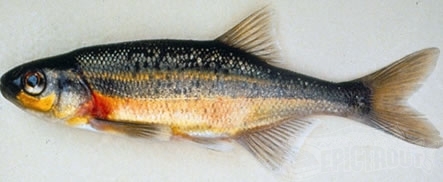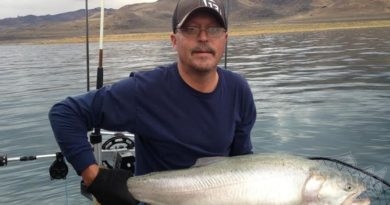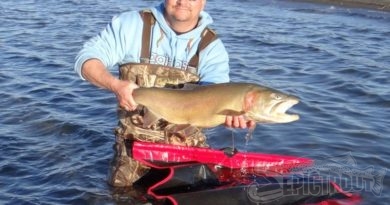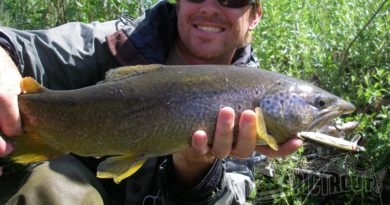The Red Side Shiner
It pays to know your quarry. Big trout get big for a reason… they eat other fish. Have you ever seen a 300 pound vegetarian? I think not! If you want to target the biggest trout in the lake then you need to understand all of the forage fish that they feed on.
We have talked about Kokanee and Tui Chub in our minnow series. Now we are going to talk a little about another very important forage fish in western waters that doesn’t get talked about much… the Red Side Shiner.
Many of the lakes you fish have Red Side Shiner in them and you may or may not have noticed. Most of you have taken a look at the stomach contents of big trout and have seen minnows in their gullet. Decomposition begins quickly so it is sometimes hard to ID which minnow species the trout have been targeting. Many times all that is left is some meat and bones. Some of the minnows that you have seen were probably Red Side Shiner.

There are several ways to determine if Red Side Shiners are in your favorite lake. You can take some stomach samples and hope to catch a minnow fresh enough to still have the skin on for ID. You can put out a minnow trap if that is legal. But the easiest and probably the best way is to contact your local fish and wildlife organization to see if any bait fish or forage studies have been done in the past. Chances are you will be able to get some good data that will help you ID the minnows that trout feed on in your lake.
The Red Side Shiner is characterized by some red coloration behind the gills. During spawning, the males exhibit dimorphistic characteristics and the red coloration can be darker and extend further along the body. The maximum size that you will ever see a Red Side Shiner is around 4 inches long. Believe it or not they can live up to 7 years… if a giant trout doesn’t get it first.

The Red Side Shiner is omnivorous and will feed opportunistically on both algae and aquatic macro invertebrates. They will also eat their own eggs during the spawning season. It has been shown that they will compete with juvenile trout for habitat and forage. Red Side Shiners have been introduced illegally to many lakes by anglers using them for bait in the past. Once established they can reproduce in large numbers and establish solid populations.
Spawning is temperature dependent and usually occurs May – July. This is the time of year that the males will exhibit the dimophistic coloration and the time of year you may want to have your lures match that coloration. This is assuming that you have documented Red Side Shiner in your target lake. They spawn in groups over vegetation, shoals and gravel in both moving water and in lakes.

If it is legal in your favorite lake to trap and use minnows as either live or dead bait then Red Side Shiners can be a great choice to target big trout. If your favorite lake doesn’t allow these methods but Red Side Shiner is still abundant then lures that “match the hatch” in size, coloration and swimming motion can also be very effective.
I hope that you picked up a tidbit or two from this article and the next time you fish your favorite lake you take a second to ID what your target trophy trout are feeding on. If Red Side Shiners are abundant in your lake then you can bet that big trout are feeding on them and you will want to include a strategy to capitalize on that. Good luck on your big fish hunt!
Mark Knoch




